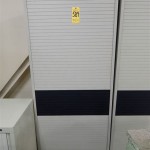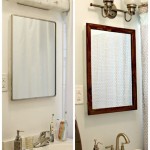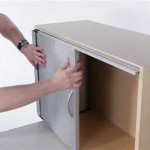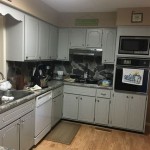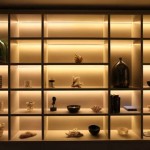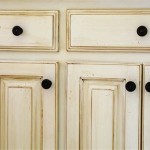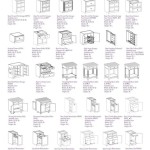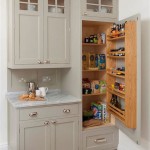Breathing New Life Into Your Cabinets With DIY Paint Booth
Kitchen and bathroom cabinets often bear the brunt of daily life, accumulating wear and tear that detracts from their aesthetic appeal. Refacing or replacing cabinets can be a costly undertaking. A more economical and satisfying solution involves repainting them. The quality of the paint job significantly impacts the final appearance and durability of the cabinets. Creating a dedicated DIY paint booth is crucial for achieving a professional-looking finish, minimizing overspray, and ensuring optimal working conditions.
A DIY paint booth provides a controlled environment that shields surrounding areas from airborne paint particles. It also helps maintain consistent temperature and airflow, promoting even paint application and drying. While commercially available paint booths offer convenience, they can be expensive and may not fit the specific needs of a home project. Building a DIY paint booth allows for customization based on the available space, budget, and painting requirements.
The construction of a DIY paint booth typically involves creating an enclosure, providing adequate ventilation, and ensuring proper lighting. The materials used can range from simple plastic sheeting and PVC pipes to more robust structures made of lumber and filter systems. The complexity of the build depends on the desired level of performance and the frequency of use.
Before embarking on the construction of a paint booth, careful planning is essential. This includes determining the size of the booth based on the largest cabinet component, selecting appropriate materials, and considering the ventilation system required to remove paint fumes and overspray. Adhering to safety guidelines is paramount throughout the entire process, from construction to actual painting activities.
Choosing the Right Location and Size
Selecting the ideal location for a DIY paint booth is a critical first step. A garage or shed is often a suitable choice, offering sufficient space and ventilation potential. If an indoor location is unavoidable, a well-ventilated room with good airflow is necessary. The chosen space should be free from dust, debris, and other contaminants that could compromise the paint finish. It is also advantageous to choose a location with easy access to electrical outlets for lighting and ventilation equipment.
Determining the appropriate size of the paint booth is directly related to the size of the cabinet components being painted. The booth should be large enough to accommodate the largest door or drawer front, allowing ample room for maneuverability while spraying. It is advisable to add extra space around the component to prevent accidental contact with the booth walls. A general guideline is to allow at least two feet of clearance on all sides of the largest item being painted.
The height of the booth should also be considered, particularly if painting tall cabinet panels or using a spray gun with an upward angle. Sufficient headroom allows for comfortable movement and prevents the spray gun from hitting the top of the booth. A height of at least seven feet is generally recommended, but this may need to be adjusted based on individual height and painting techniques.
In cases where space is limited, a collapsible or portable paint booth can be a practical solution. These types of booths can be easily set up and taken down as needed, minimizing the impact on the surrounding environment. However, collapsible booths may not provide the same level of protection and ventilation as a permanent structure.
Building the Frame and Enclosure
The frame of the DIY paint booth provides the structural support for the enclosure. PVC pipes, lumber, or metal framing members can be used for this purpose. PVC pipes offer a lightweight and cost-effective option, while lumber provides a more robust and durable frame. Metal framing members are generally the strongest but may require specialized tools and skills for assembly.
When using PVC pipes, connect the pipes using appropriate fittings to create a rectangular or square frame. Ensure that the frame is stable and level before proceeding. Lumber can be joined using screws, nails, or wood glue to create a strong and rigid frame. Metal framing members typically require welding or bolting for assembly.
The enclosure of the paint booth serves to contain overspray and protect the surrounding environment. Plastic sheeting, canvas tarps, or Tyvek house wrap can be used for this purpose. Plastic sheeting is a budget-friendly option, but it is prone to tearing and may not provide adequate protection against overspray. Canvas tarps offer better durability and are less likely to tear, but they can be more expensive. Tyvek house wrap is a durable and breathable material that is resistant to tearing and offers excellent protection against overspray.
Secure the enclosure material to the frame using clamps, staples, or tape. Ensure that the enclosure is tightly sealed to prevent paint particles from escaping. Overlap the material at the seams to provide added protection. A doorway or opening should be created to allow access to the booth. This can be achieved by cutting a slit in the enclosure material and using Velcro strips or zippers to create a closure.
Implementing Effective Ventilation and Lighting
Proper ventilation is of paramount importance in a DIY paint booth. Adequate airflow is essential for removing paint fumes, minimizing overspray, and ensuring a safe working environment. A ventilation system typically consists of an exhaust fan and an intake filter. The exhaust fan draws air out of the booth, while the intake filter allows fresh air to enter.
The exhaust fan should be sized appropriately for the volume of the paint booth. A general guideline is to use a fan that can exchange the air in the booth at least four times per hour. The fan should be positioned at the back of the booth, near the floor, to effectively remove heavier-than-air paint fumes.
The intake filter should be located near the front of the booth, opposite the exhaust fan. The filter should be made of a material that effectively traps paint particles and other contaminants. Fiberglass filters, carbon filters, or electrostatic filters can be used for this purpose. Regularly replacing the filter ensures optimal airflow and prevents the buildup of paint residue.
Proper lighting is essential for achieving a professional-looking paint finish. Adequate illumination allows for accurate color matching and ensures that imperfections are easily visible. Fluorescent lights, LED lights, or halogen lights can be used to illuminate the paint booth. LED lights are energy-efficient and long-lasting, while halogen lights provide a brighter and more intense light source. Position the lights strategically to minimize shadows and provide even illumination across the entire painting surface.
Consider using a combination of lighting types to achieve optimal illumination. For example, fluorescent lights can be used for general illumination, while LED lights can be used to highlight specific areas. Ensure that the lights are protected from overspray and paint particles by encasing them in protective housings.
In addition to the basic components of a paint booth, several optional features can enhance its functionality and performance. These include a turntable for easy rotation of cabinet components, a spray gun holder for convenient storage, and a dehumidifier to control the humidity level inside the booth. These features can be added as needed based on individual preferences and painting requirements.
Maintaining a clean and organized paint booth is crucial for achieving consistent results and prolonging its lifespan. Regularly clean the booth walls, floor, and filter to remove paint residue and dust. Store paint supplies and equipment in an organized manner to prevent clutter and ensure easy access. Inspect the booth for any signs of damage or wear and tear and make repairs promptly.
Building a DIY paint booth for cabinet painting is a project that requires careful planning and execution. By following these guidelines, individuals can create a functional and effective paint booth that will help them achieve professional-looking results and transform their cabinets into stunning focal points.

Refresh The Cabinets In Your Home Without Starting From Scratch Angela Rose

Breathing New Life Into My Creative Space Art Studio Makeover

Using Spray Paint To Update Home Decor Making Redesign Affordable

Refresh The Cabinets In Your Home Without Starting From Scratch Angela Rose

Kitchen Cabinet Paint Pictures Ideas Tips From

5 Ways To Breathe New Life Into Your Old Kitchen Affordable And Stylish Upgrades

Transform Your Kitchen And Bathrooms With Professional Cabinet Painting In Canton Oh That 1 Painter

5 Ways To Breathe New Life Into Your Old Kitchen Affordable And Stylish Upgrades

Blog Funcycled Interior Design Kitchen Cabinet Painting Furniture Repurposing In Upstate Ny

Diy Airbrush Paint Booth Help Me Select A Blower Fan
Related Posts

